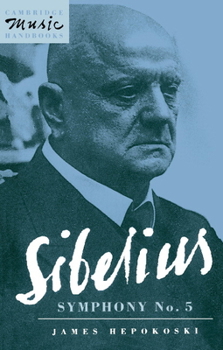Book Overview
Sibelius's Fifth is one of the great late-Romantic symphonies. In this searching account, based on a wealth of new information, James Hepokoski takes a fresh look at the work and its composer. His findings have implications beyond Sibelius himself into the entire repertory of post-Wagnerian symphonic composition. In addition to providing a descriptive analytical overview, the book also chronicles the work's initial composition and subsequent revisions...
Format:Paperback
Language:English
ISBN:0521409586
ISBN13:9780521409582
Release Date:October 2010
Publisher:Cambridge University Press
Length:124 Pages
Weight:0.40 lbs.
Dimensions:0.3" x 5.4" x 8.5"
Customer Reviews
2 ratings
An informative and enjoyable guide to a powerful symphony that underwent a long genesis
Published by Thriftbooks.com User , 16 years ago
Jean Sibelius' Symphony No. 5 is one of the great achievements of late Romanticism and stands as the Finnish composer's most widely loved works in that genre. It is a piece ingenious in its internal workings and with a great history behind it and, and James Hepokoski presents this all to us in his entry in the Cambridge Music Handbooks series. Before even talking about the symphony itself, Hepokoski gives us a great deal of background. We see Sibelius, the composer of the radical Fourth symphony where dissonance is unleashed, meets the music of Schoenberg. He realizes that he can't compete in that area and decides to blaze his own unique path. This, Hepokoski notes, was only one episode in a great encounter between "modernists" (the generation of the 1860s) and makers of the "new music" (the Second Viennese School and others). Out of this encounter Sibelius fashioned between 1912 and 1915 five central concepts for his music: content-based forms ("fantasias"), rotational form (varied multisectional strophes), teleological genesis ("phenomenological" reflection), Klang meditation, and the interrelation and fusion of movements. One all this is established, Hepokoski gets to the Fifth itself. We follow the long course the symphony took towards completion, amply illustrated by extracts from Sibelius' diaries and correspondence. Many of his musical sketches are here, and it is remarkable how so much of the material that Sibelius was writing during this time found its place in the Sixth and Seventh symphonies, making this guide useful for fans of those as well. The exact modifications Sibelius made in the rewriting of the Fifth in 1916 and 1919 are clearly explained, and the reasons for these changes are suggested from the critical reaction to the earlier two performances. The commentary on the music itself of the 1919 version is relevatory, for although Sibelius' symphony is quite accessible and its main lines quite elegant, Hepokoski can draw your attention to little details that make it all the more enjoyable. A final chapter discusses the different editions published and Sibelius' own tempo markings set down late in life. Hepokoski compares some widely available recordings of the Fifth. Vanska's recordings of Sibelius' orchestral works are increasingly seen as the cream of the crop, and it is a pity that they could not be included in the discussion of performances here. In fact, most of the recordings that Hepokoski examines are those made with foreign conductors like Karajan, Davis, Ashkenazy and Bernstein who arguably distorted the work by making it too generically Romantic and expunging it of Sibelius' unique character. It's a pity that there isn't any section on the impact of Sibelius' Fifth on later composers. Per Norgard has stated that the scoring of the Swan Hymn's second appearance in the third movement, where the bass plays the theme at the same time as the horns at one third the speed, was a major inspiration for his own multidimensio
Good insight and information
Published by Thriftbooks.com User , 22 years ago
This book is very informative. It gives a good insight on Sibelius' attitude to composing, his fears and his view of his standing to his pears. It also gives a good overview on the Symphony and an interesting approach to Sibelius' form. Those interested in Sibelius' metronome markings on the Symphony from 1947 find a good comparison to the most recordings, which is very revealing.A very helpful book for me to get close to the piece for study and hopefully for a good performance of it next week.






